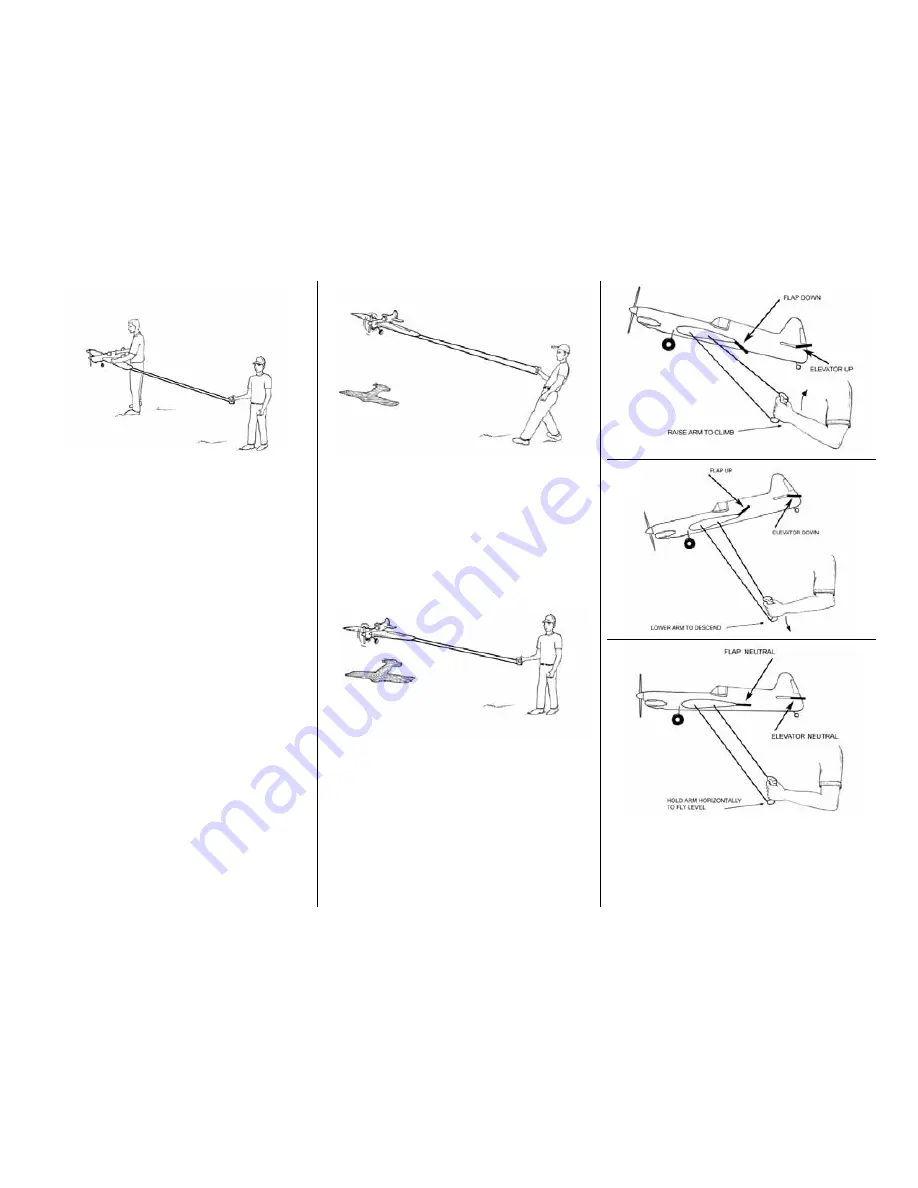
While the pilot is holding the lines, the assistant
should walk the model once around the circle to be
certain the flight path is clear and to double-check that
there are no obstructions that could snag the lines.
The pilot should double-check the operation of the
controls by pulling and pushing on the handle and
having the assistant signal what the controls are
doing (“up” and “down”).
Takeoff
Note: A fully cowled engine may run at a higher
temperature than an un-cowled engine. Therefore,
the fuel mixture should be richened so the engine
runs at least 200 RPM below peak speed. By running
the engine slightly rich, you will help prevent dead-
stick landings caused by overheating. Traditionally,
control line pilots intentionally set their engines rich
so that during vertical maneuvers, the engine will not
“over lean,” thus causing overheating. Further, full
RPM is usually not desired for stunt flying.
When both the pilot and assistant are ready, the
model may be fueled and started. Once the engine is
running and the model is ready to be released, the
assistant should point the nose of the model slightly
away from the circle. This will help keep the lines taut
for the first few feet until the model gets going.
Upon the pilot’s signal, the assistant may release the
model–never push the model forward as doing so
may result in a crash.
The pilot should be ready–especially during takeoff–to
briefly step back to maintain line tension until the
model has gained enough air speed to achieve line
tension on its own. Allow the model to roll out and
gain enough speed to become airborne. When
enough speed has been gained the pilot may raise
his arm slightly giving “up” elevator command, thus
allowing the model to leave the ground.
Once the model has lifted, maintain a slow and
steady climb until a comfortable altitude has been
reached (usually between “eye-level” and approximately
ten feet in the air). The lines must remain taut
throughout the entire flight. If the lines ever do go
slack the pilot will not have control of the model.
During most situations the model’s factory built-in
features will allow it to maintain good line tension, but
on occasions when the wind blows the model inward
or the model becomes too slow the modeler must
anticipate or notice a decrease in “pull” and quickly
step backward to tighten the lines and regain control.
To climb, the pilot will slowly raise his arm. To
descend, the pilot will slowly lower his arm. To
maintain level flight the pilot will hold his arm
horizontally. Beginning pilots should control the
model by keeping their arm straight and bending at
the elbow with little or no wrist movement. Later,
- 21 -




































